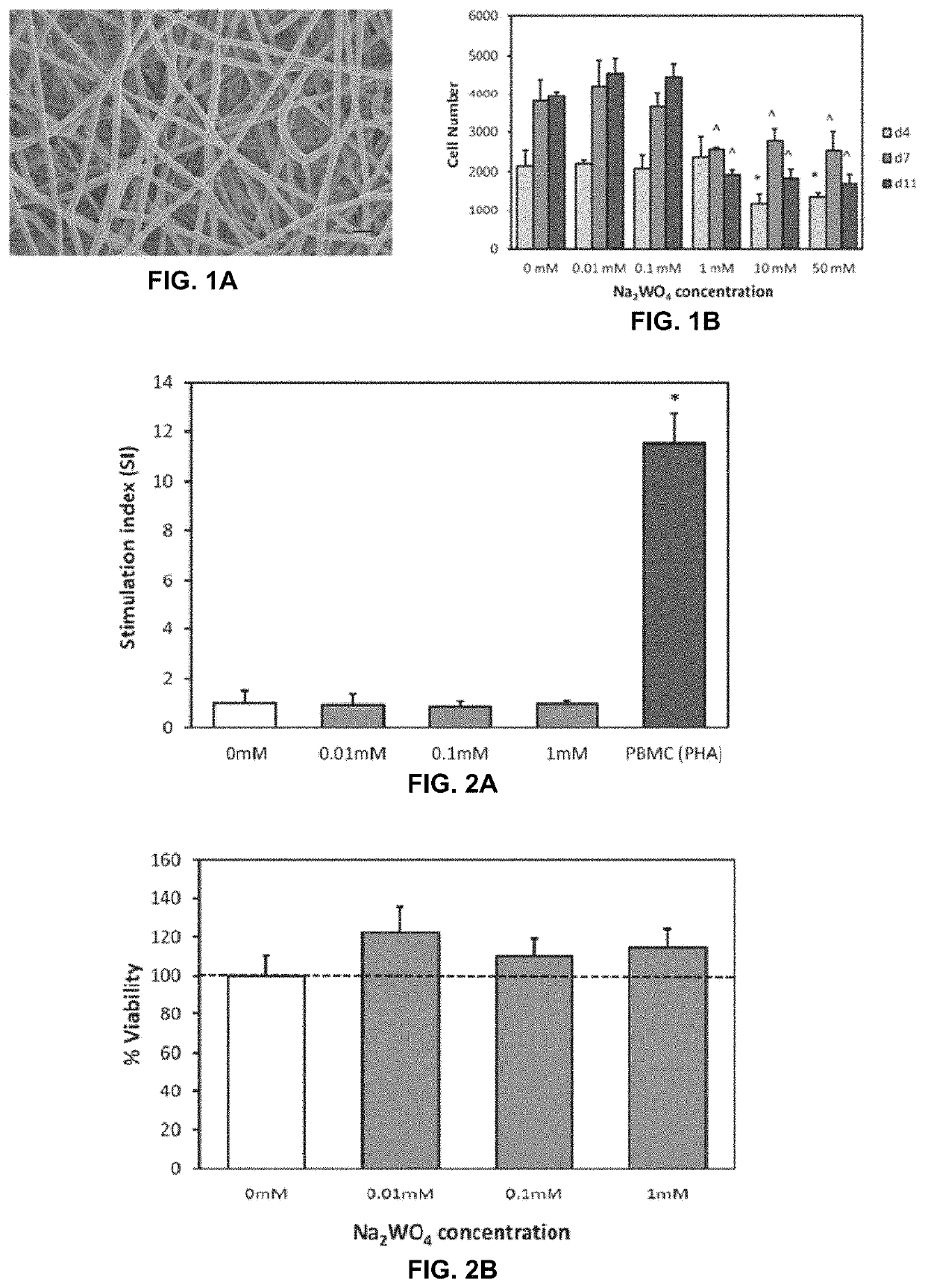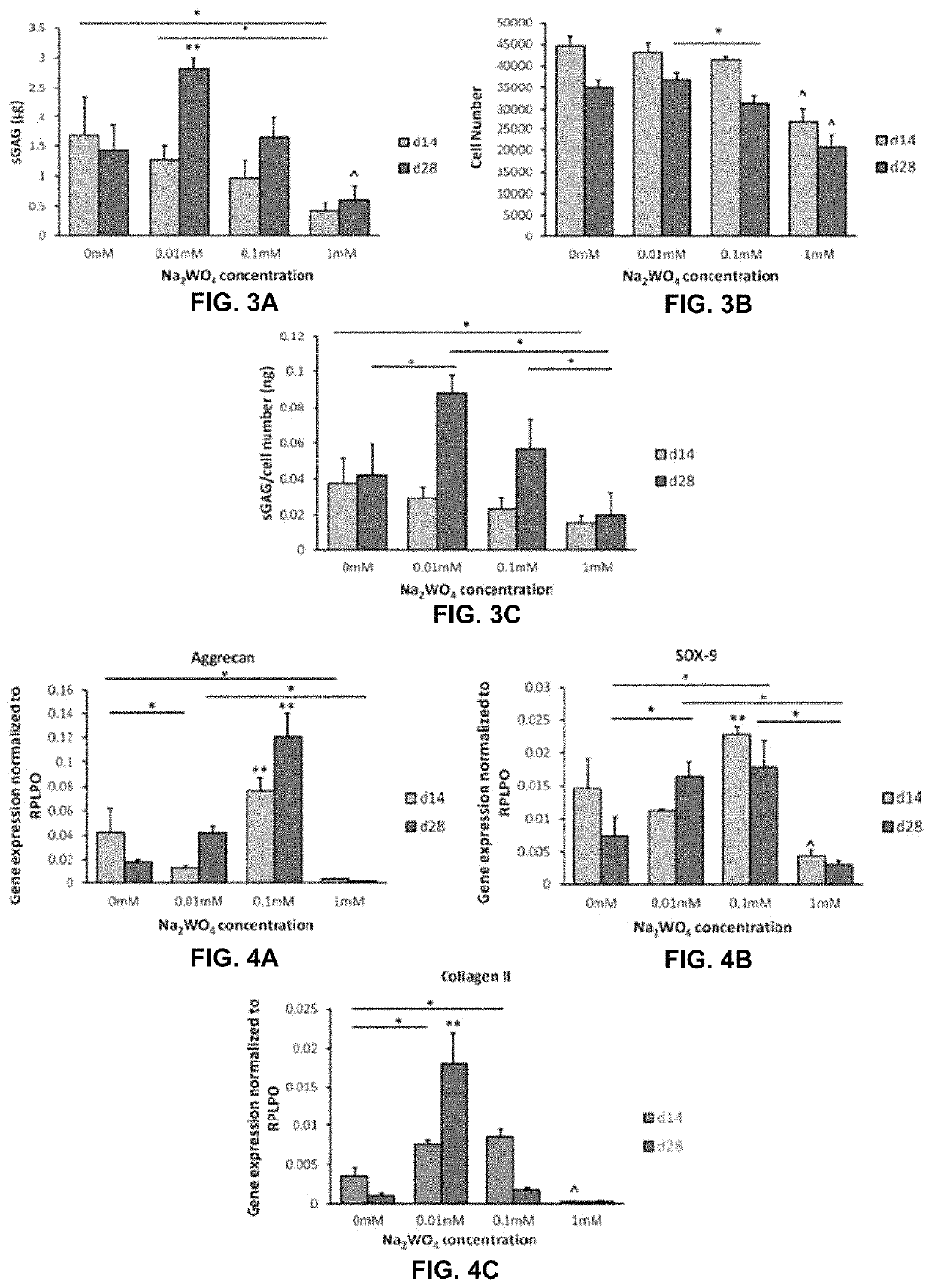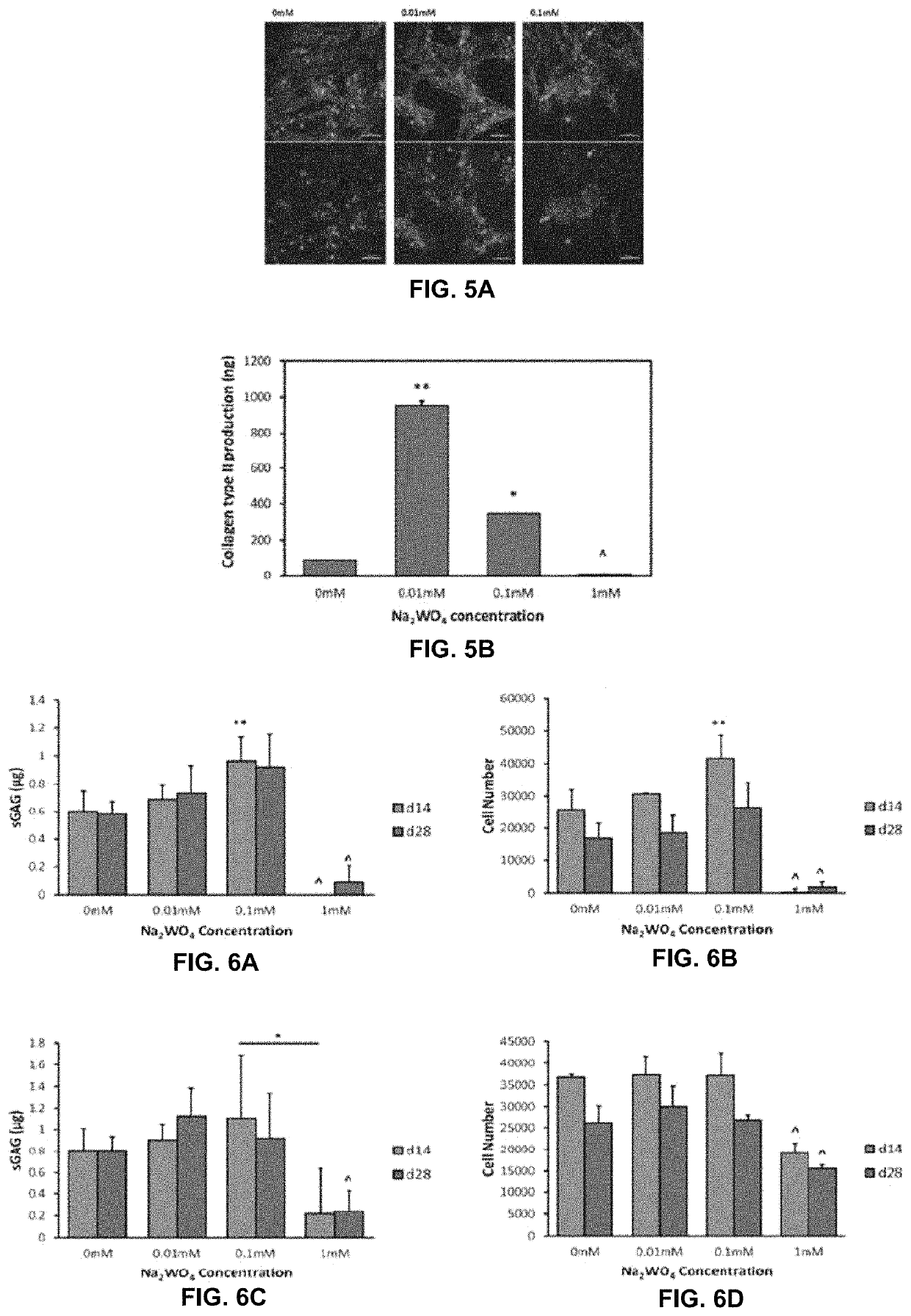System and method for insulin-mimetic of cartilage, bone, or osteochondral repair and piezoelectric composite scaffold
a composite scaffold and cartilage technology, applied in the field of cartilage, bone or osteochondral repair, can solve the problems of limited ability of articular cartilage to regenerate and repair, difficult local delivery of insulin, and current therapies that do not restore a normal hyaline cartilage, etc., to promote the growth and/or differentiation and/or repair of a cell and/or tissue, and enhance fracture healing
- Summary
- Abstract
- Description
- Claims
- Application Information
AI Technical Summary
Benefits of technology
Problems solved by technology
Method used
Image
Examples
Embodiment Construction
n insulin mimetic and a piezoelectric composite scaffold in combination or alone for supporting cell, tissue, and bone growth. In one embodiment, the insulin mimetic is sodium tungstate (Na2WO4). While the use of sodium tungstate is exemplary, it will be understood that other insulin mimetics could be used. The amount of sodium tungstate could vary depending on the properties desired.
[0046]Sodium tungstate (Na2WO4) is a water soluble inorganic compound that can exert an insulin-like effect in diabetes [16,17]. Several studies have shown that oral administration of Na2WO4 into animal models of type 1 and type 2 diabetes normalize glycaemia without hypoglycemia [17-19]. Dominguez et al. [20] showed that glycogen synthesis and deposition are increased in the presence of Na2WO4. Na2WO4 stimulates insulin secretion and regenerates the β cell population however, it does not stimulate insulin secretion at low glucose levels suggesting that Na2WO4 does not induce hypoglycemia [21]. Moreover...
PUM
| Property | Measurement | Unit |
|---|---|---|
| MW | aaaaa | aaaaa |
| voltage | aaaaa | aaaaa |
| diameter | aaaaa | aaaaa |
Abstract
Description
Claims
Application Information
 Login to View More
Login to View More - R&D
- Intellectual Property
- Life Sciences
- Materials
- Tech Scout
- Unparalleled Data Quality
- Higher Quality Content
- 60% Fewer Hallucinations
Browse by: Latest US Patents, China's latest patents, Technical Efficacy Thesaurus, Application Domain, Technology Topic, Popular Technical Reports.
© 2025 PatSnap. All rights reserved.Legal|Privacy policy|Modern Slavery Act Transparency Statement|Sitemap|About US| Contact US: help@patsnap.com



